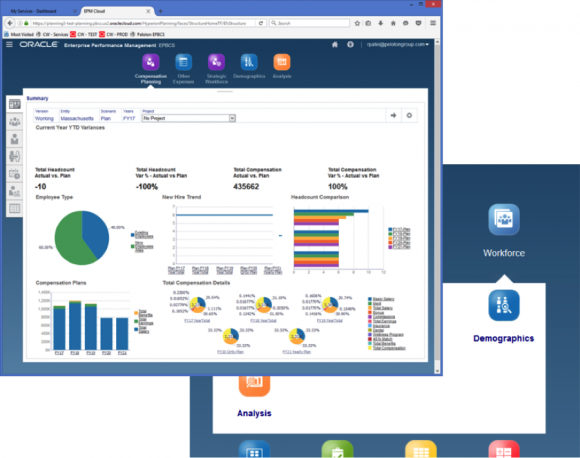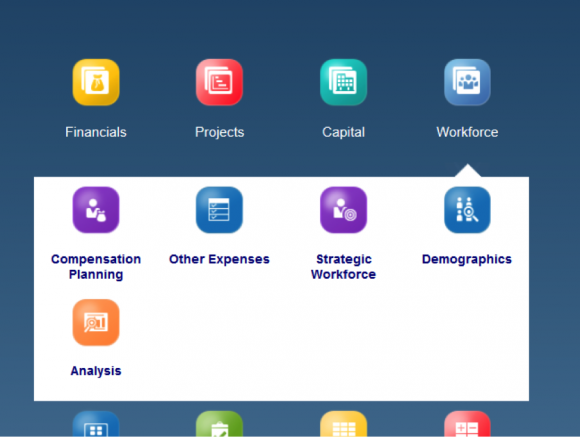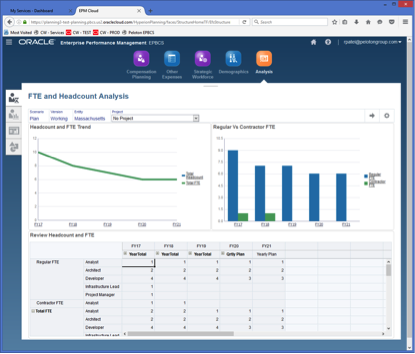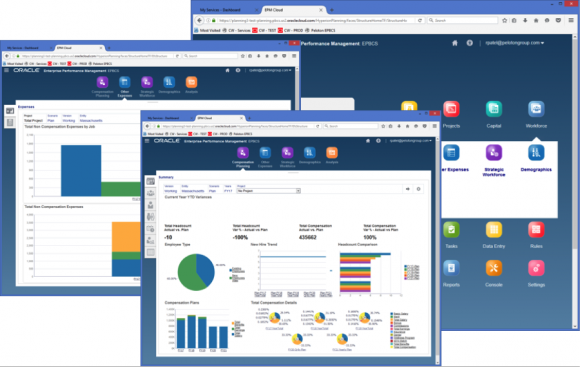Generally the largest expense in any organization is the cost of its workforce. In a dynamic business environment, workforce costs are hard to predict, manage, and control while organizations require accurate forecasts of labor expenses, workload demands, future resource needs, and other critical metrics. While workforce planning has become increasingly more integrated across the enterprise, workforce management forecasting and analysis is often still handled inefficiently by using spreadsheets. Organizations have been seeking a streamlined tool that enables them to understand the growing impact on financial statements, analyze the success of the workforce, and forecast future growth and attrition.

Oracle has now developed a new set of tools within Enterprise Planning Budgeting Cloud Services (EPBCS) enabling organizations to manage workforce planning needs more effectively. The Workforce business process is a cloud-based tool that can be configured and deployed rapidly while providing broader functionality and seamless integration with other areas of planning. With the introduction of EPBCS Workforce business process, labor planning is been broken down into four sub-processes:
1) Compensation Planning
2) Other Expenses (NEW)
3) Strategic Workforce (NEW)
4) Demographics (NEW)
Compensation planning has been simplified and allows for increased flexibility to plan for varying compensation packages while increasing accuracy down to the employee or job level. In addition to base salary, up to ten accounts come out-of-the-box to calculate additional earnings such as bonuses, incentives, or commissions with customizable configurations to calculate independently or from the base salary. These accounts can be configured through a new wizard that allows users to select a variety of drivers, rates, tables, and thresholds and dynamically create new members and calculation logic.
Oracle has provided additional input options to complete full labor planning within a singular interface. Other Expenses covers all non-compensation labor expenses such as Travel & Entertainment, Training, and Communications. Whether these accounts are planned at an Employee level or at a Department level, organizations now have a dedicated tool to plan all labor-related accounts.

The EPBCS Workforce business process also introduces the Strategic Planning and Demographics sub-processes. Strategic Planning provides senior management the ability to perform Headcount or FTE planning based on global strategies for short- and long-term time horizons. Whether an organization is trying to understand the impact of attrition and retirement rates or predict future resource needs, Strategic Planning can calculate historical trends and derive an insightful forecast. These what-if scenarios can be calculated in secured views to allow users to test different sets of driver assumptions.

The new Demographics sub process allows organizations using EPBCS to integrate its Human Resources and Recruiting functions into the planning process. By loading employee attributes (most commonly stored in HR source systems) into the application, Workforce business rules can shed light on the employee attributes that drive the best strategic results across departments or business units. This actionable information can quickly be leveraged by HR in recruiting efforts and hiring decisions to develop a higher performing workforce.

Want to learn more? View our brief EPBCS Workforce Planning video demo.


